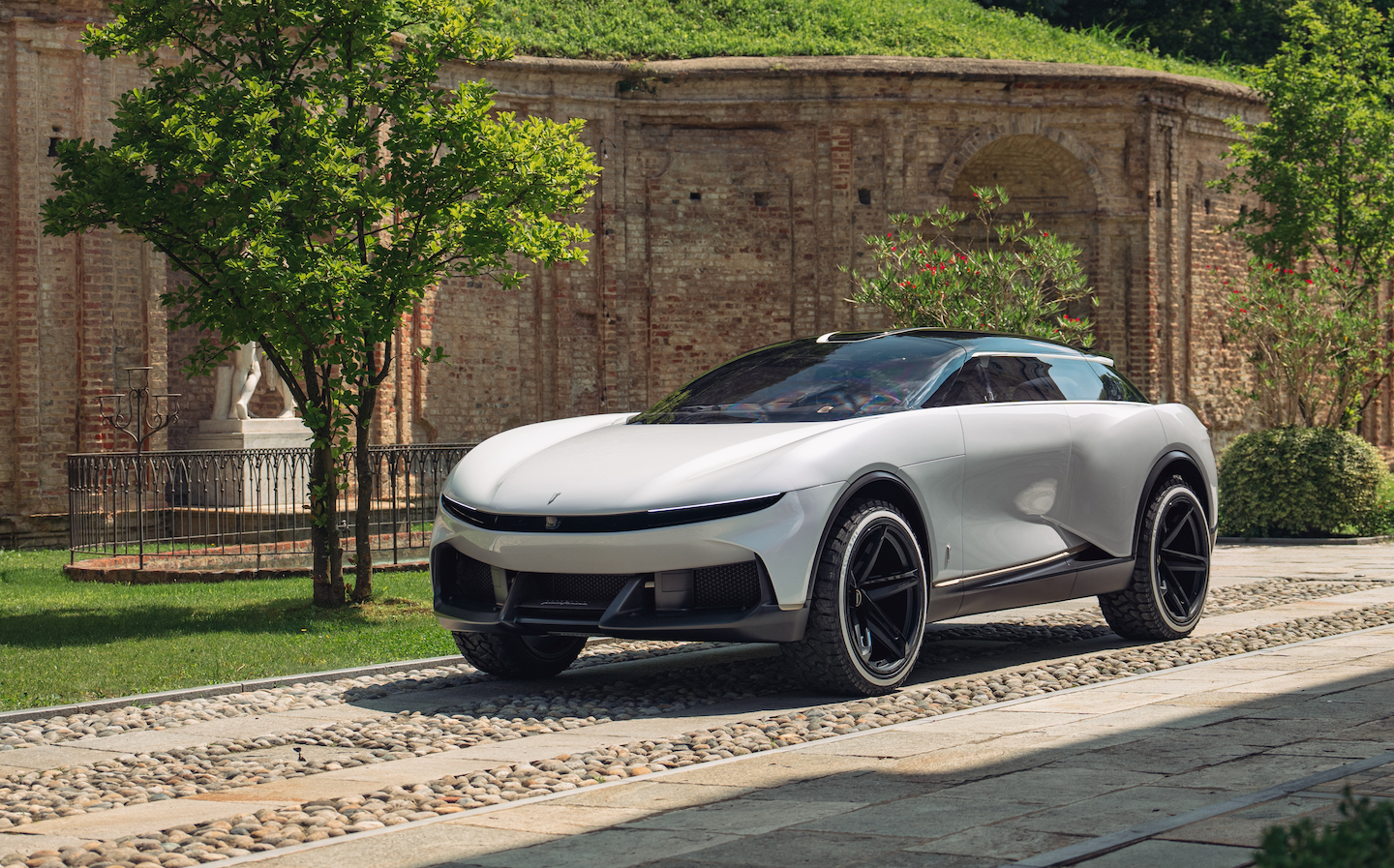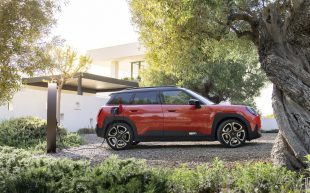Automobili Pininfarina reveals luxury SUV called Pura Vision
Pura is more than a name
The maker of the Battista electric hypercar, Automobili Pininfarina, has revealed a striking show car called the Pura Vision that could preview its next model.
The four-seater will make its public debut at the prestigious Monterey Car Week later this month.
Despite its raised ride height, Automobili Pininfarina doesn’t call the Pura Vision an SUV. Instead, it prefers to describe it as an electric Luxury Utility Vehicle (e-LUV). Presumably, cab drivers in the North of England weren’t in the focus group for that one.
At the front are what seem like impossibly thin headlights that use ultra-slim L.E.S.S. nanofibre technology to create the car’s lighting signature. Each strand is less than 1mm thick and forms a structure that can create almost any design.
The lower section of the front bumper contains necessary air intakes for cooling and aerodynamic performance. This part and the other lower areas of the car are exposed carbon fibre, while the bodywork is finished in Bianco Sestriere paint.
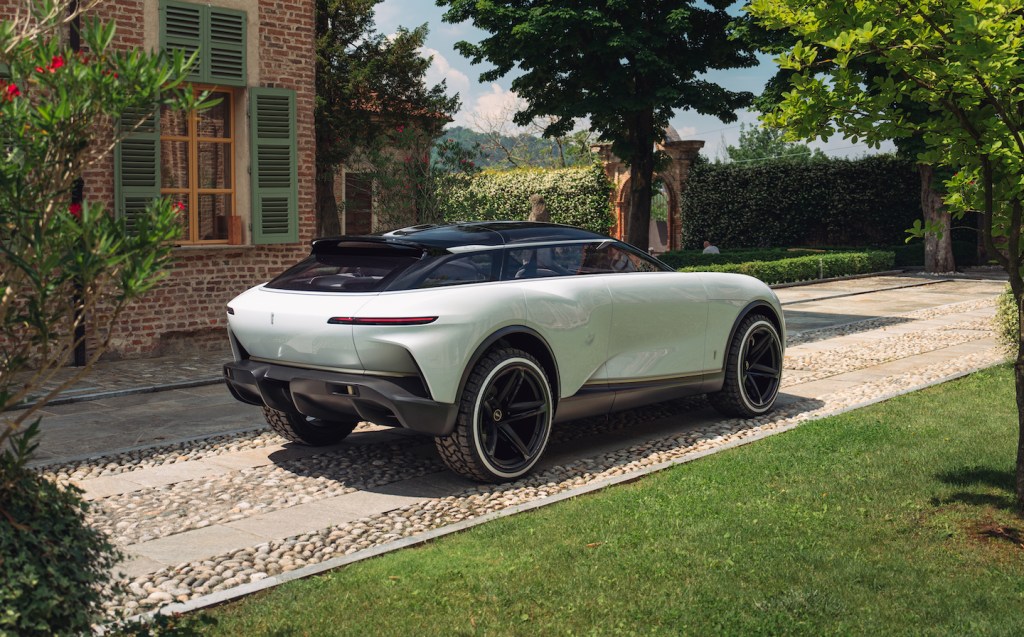
Sitting on 23in matt black wheels shod with chunky off-road-capable tyres complete with a white stripe, the Pura Vision is something of a dichotomy, merging rugged capability with clean, simple lines.
A cab-rearward design adds to the show car’s striking nature, especially in side profile, and highlights the purposeful rear haunches.
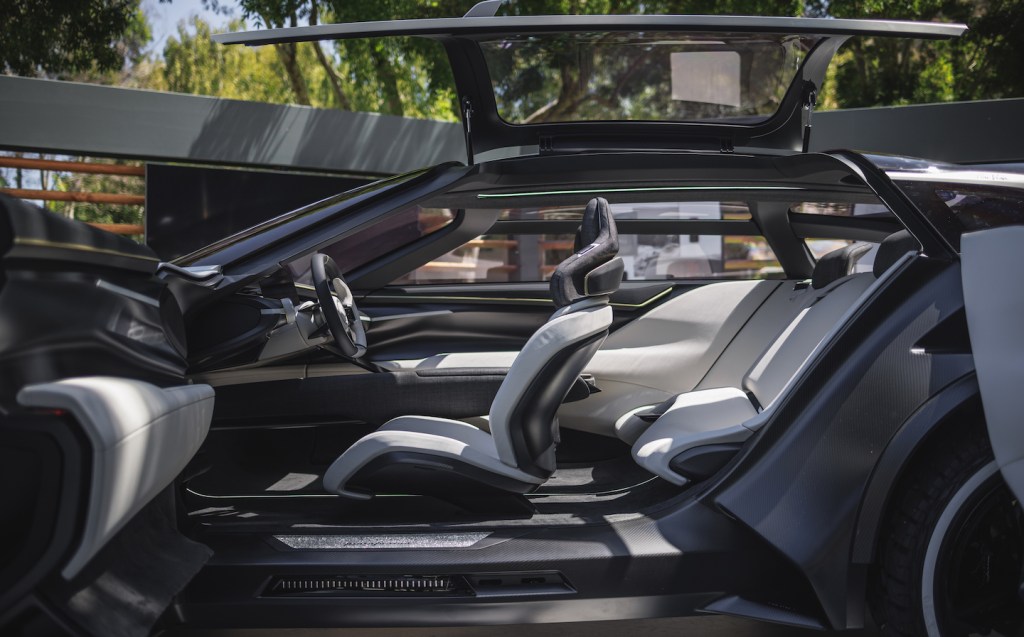
The glasshouse design is sleek and creates an airiness to the interior and is surrounded by an aluminium beltline. To add to the wow factor, the doors open from opposite ends as the side glass rises like a gull-wing door.
That indicates that you can’t put the windows down in the Pura Vision; it’s a good thing it’s just a show car. More importantly, the “tri-opening pillarless doors” provide entirely unobstructed access to the cabin.
Less is more cabin
Within lies a minimalist and modern cabin with a dashboard that looks remarkably close to one that could go into production soon.
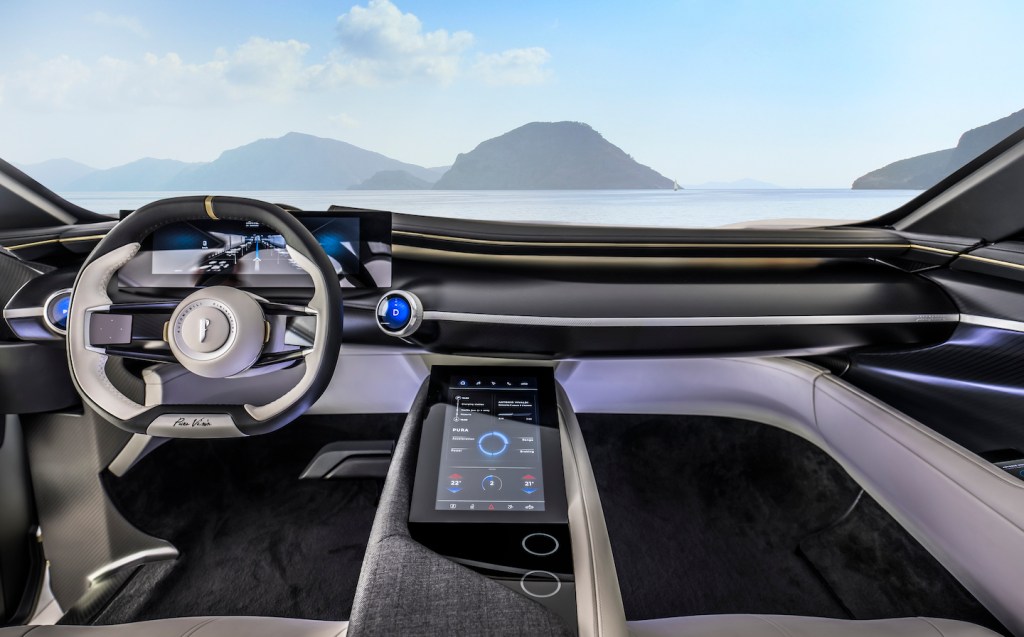
A wide digital instrument display sits behind a squarish steering wheel with haptic controls on each spoke. There is a secondary digital display set at a shallow angle lower down on the centre console that runs through the centre to the rear seats.
Both this section and the seatbacks are draped in a fabric material that is made of a blend of 30 per cent Nativa wool and 70 per cent recycled polyester. The material, Automobili Pininfarina says, already meets its durability standards for production vehicles, suggesting we may see more of it in future models.
Sara Campagnolo, colour and materials design director at Automobili Pininfarina, said: “Materials are more than just a cover – they represent the very fabric of our vehicles. In keeping with our Pura design philosophy, Pura Vision uses the fewest and highest quality materials possible, as efficiently as possible, to create a highly tailored, timeless and sustainable finish.”
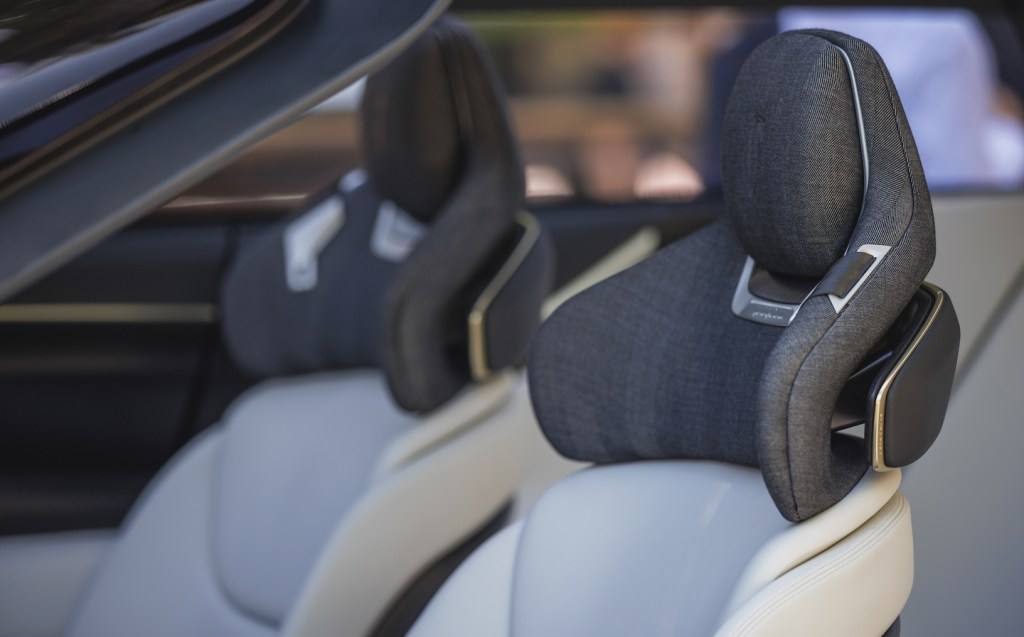
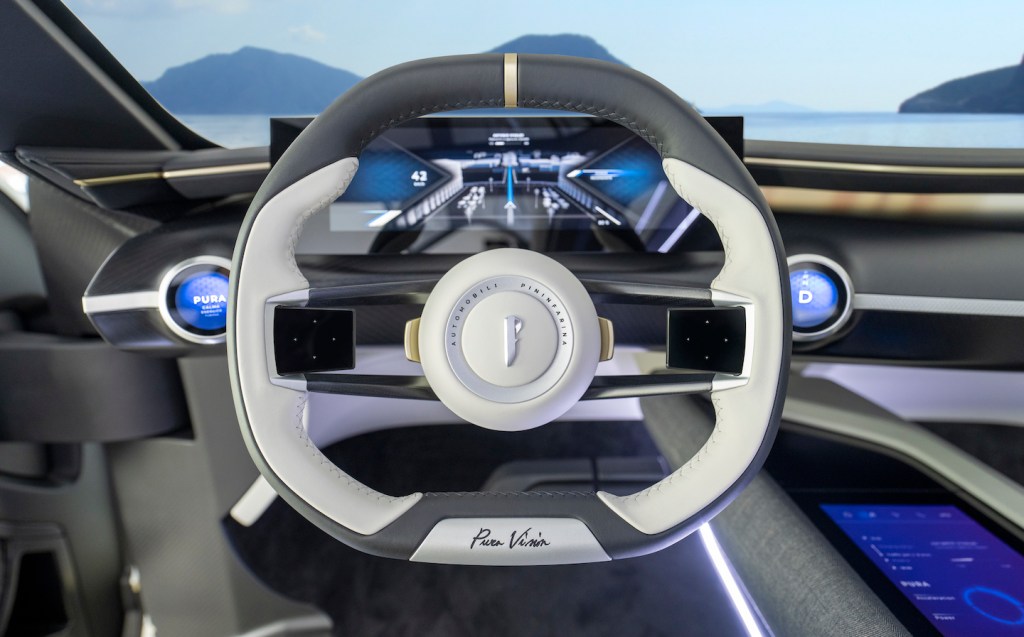
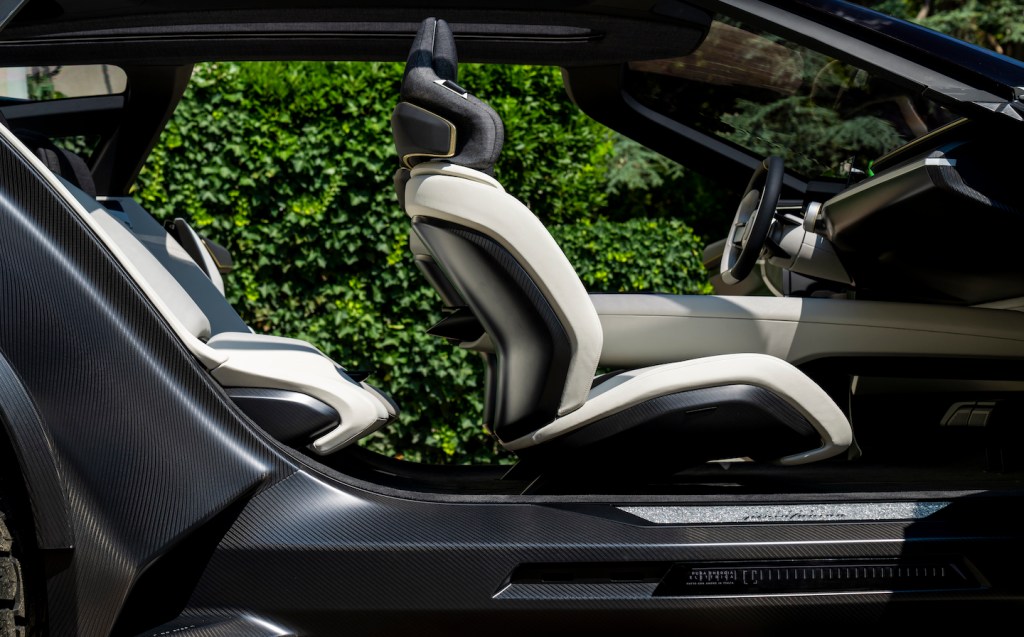
Continuing that talk of sustainability, the company plans to let little go to waste. The aluminium offcuts from the production process of its wheels go back into producing the protective kickplates on the door sills.
In describing the Pura Vision the CEO of Automobili Pininfarina, Paolo Dellachà, described it as “the bridge from our present to an exciting new chapter in the history of Automobili Pininfarina”.
He continued: “In our fifth year, we have already celebrated our unique heritage with the introduction of the Battista Edizione Ninni Farina. Pura Vision previews an exciting future and shows what can be achieved if we apply our Pura design principles to an entirely new kind of vehicle.
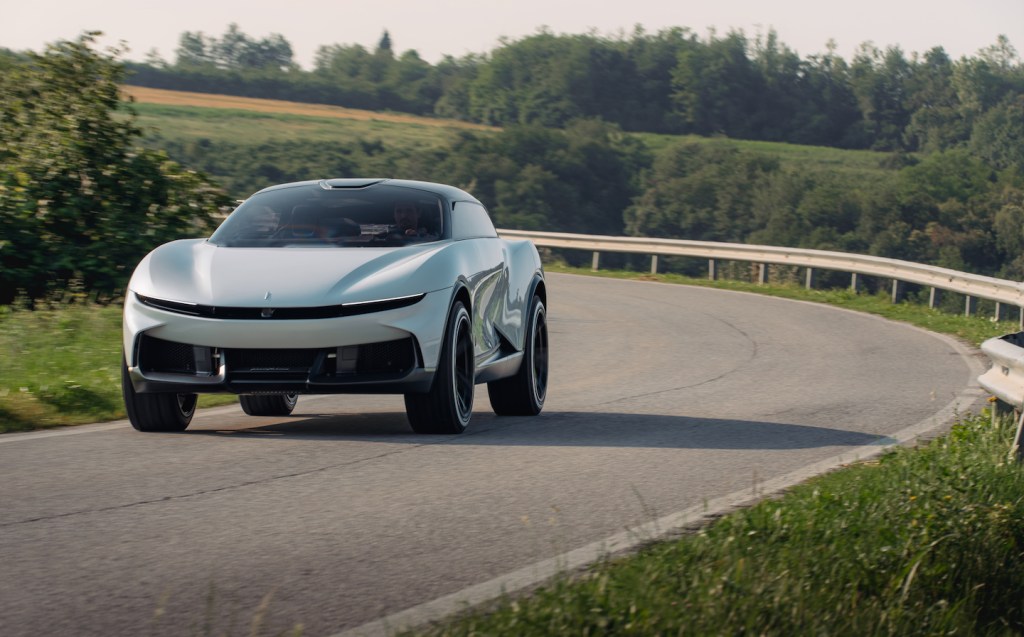
“Much more important than simply a concept previewing one forthcoming vehicle, Pura Vision presents a sharp, modern design philosophy inspired by the rich heritage of Pininfarina and defining an unmistakable recipe for a collection of beautiful new luxury cars.”
For now, at least, Automobili Pininfarina isn’t talking about any performance capabilities of the Pura Vision, preferring to focus solely on design. But it would likely utilise some of the same platform architecture used in the Battista, such as its high-voltage battery and motors.
While it is unlikely to match the Battista’s breathtaking performance, the dialling back of performance from the same powertrain could significantly add more range than the 310 miles available in the 250mph hypercar.
Related articles
- After reading about the Automobili Pininfaria, why not read our review of the Battista electric hypercar
- The High Court has ruled that the expanded ULEZ can go ahead
- And click here if you want to see our guide to all the car makers’ electric vehicle plans
Latest articles
- Omoda 5 prototype review: Bargain family SUV is solid first effort for new Chinese brand
- Dacia Duster 2024 review: Rugged, affordable SUV modernised with electrification and quite the glow up
- Audi A3 Sportback 2024 review: Softly, softly, catchy premium hatchback buyer
- New electric-only Mini Aceman fills gap between Mini Cooper hatch and Countryman SUV
- Tesla driver arrested on homicide charges after killing motorcyclist while using Autopilot
- Porsche Macan 2024 review: Sporty compact SUV goes electric, but is it still the class leader for handling?
- F1 2024 calendar and race reports: What time the next grand prix starts and what happened in the previous rounds
- Aston Martin DBX SUV gets the interior — and touchscreen — it always deserved
- Nissan unveils bold look for updated Qashqai, still made in UK


